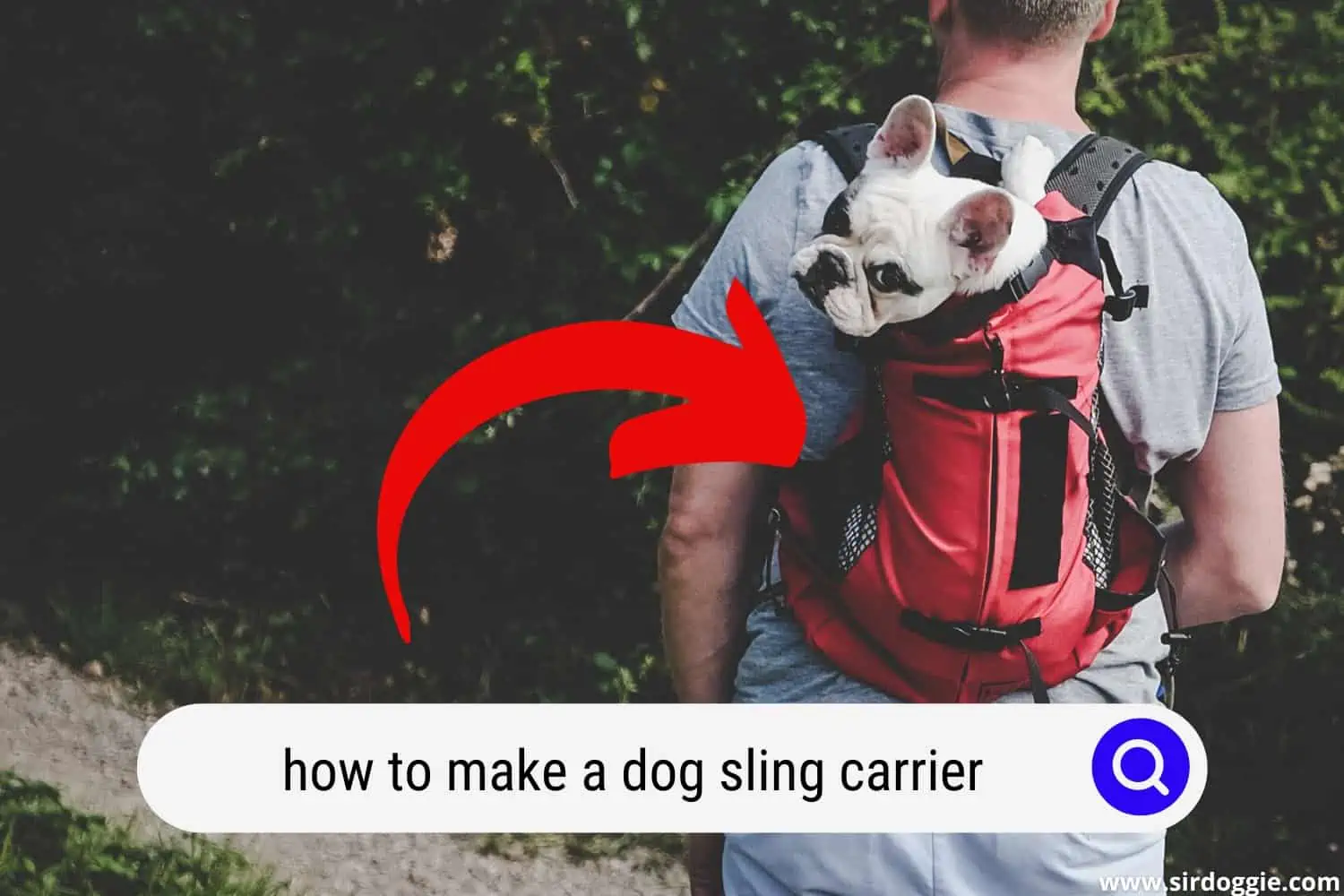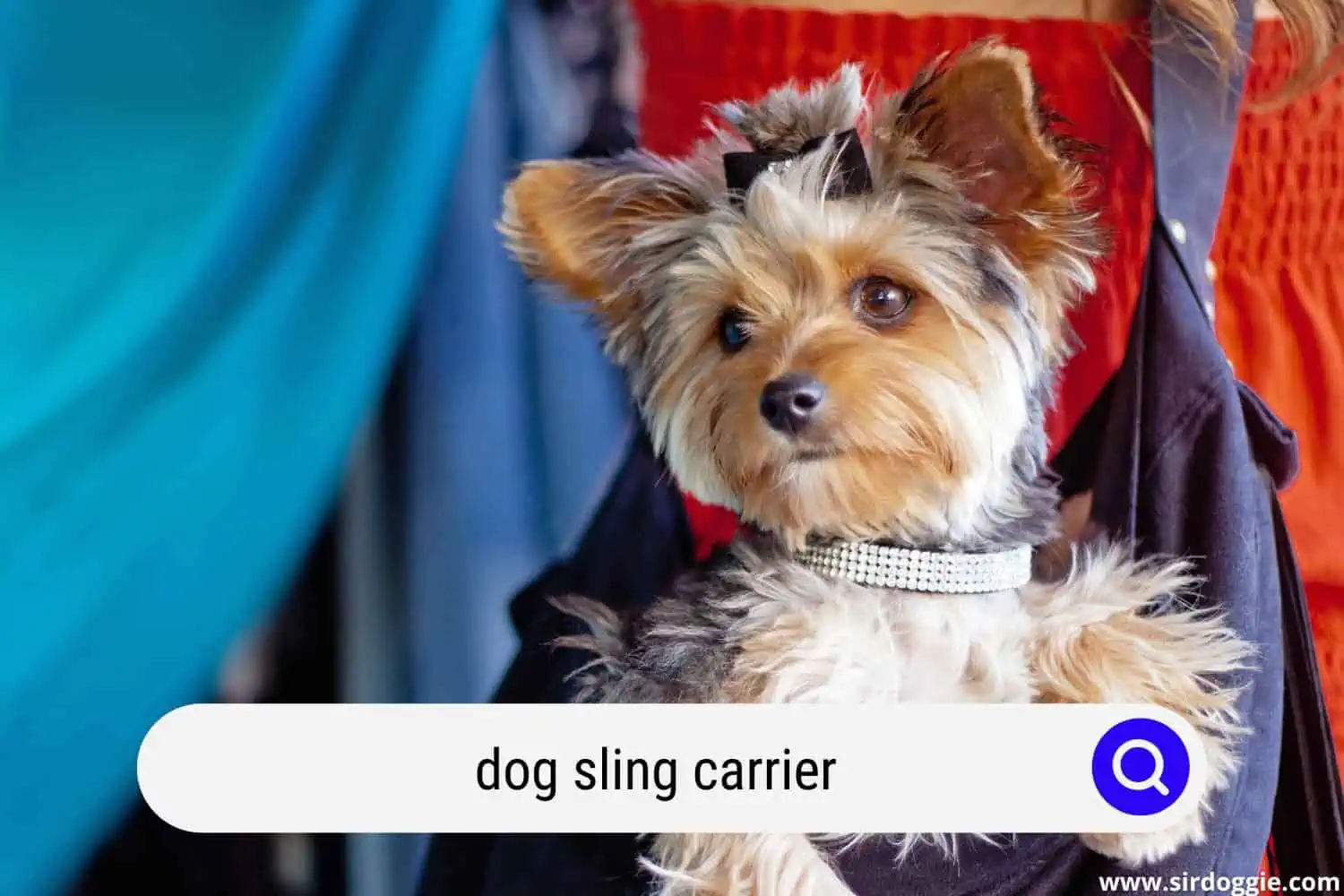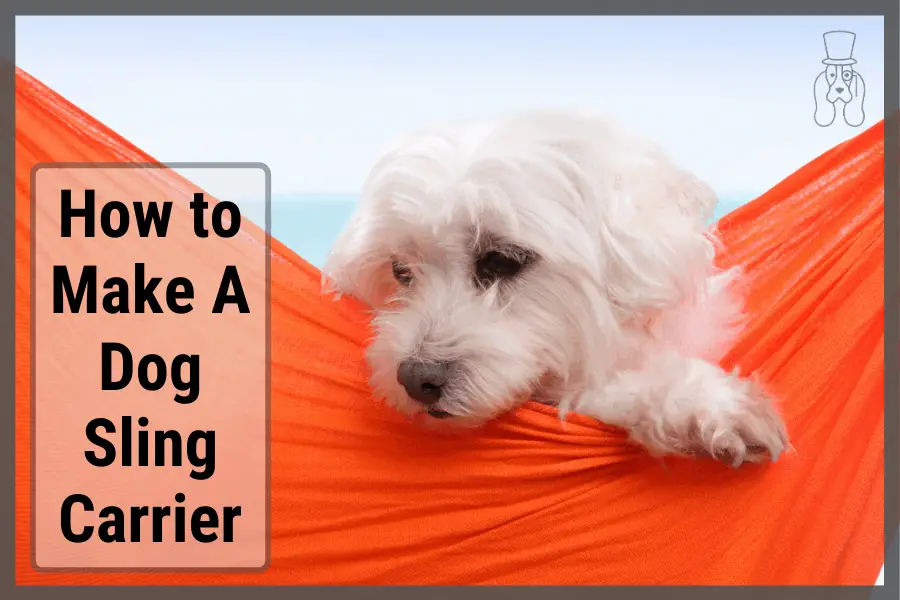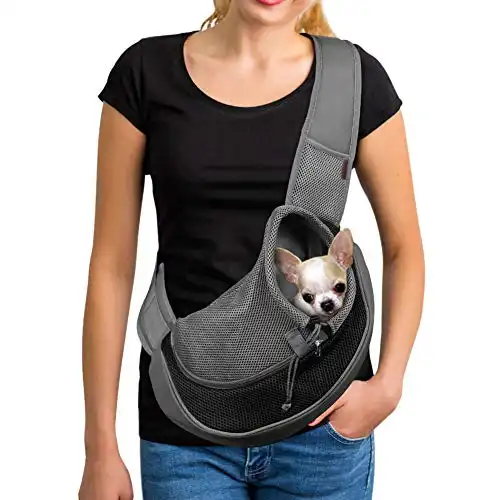How to Make A Dog Sling Carrier & Save Your Money
How do you make a dog sling carrier? By sewing a piece of fabric together in a few places, you can make a secure place to keep your dog. There are also dog sling carriers that require only a few cuts if you need to make one quickly.

Dog carriers are a popular item among pet parents and sling carriers have been one of the most sought-after items. The good news is that before you spend a ton of money on a dog sling carrier, you can actually make your own. It is a lot easier than you think!
There’s more than one way to use items from around your home to create a dog sling but it helps to know how to sew. They are not only easy to make, but they are great for your doggie as well.
While making your own dog sling may seem intimidating, it is an excellent project for those who are looking to get into sewing and some extra at-home DIY projects. Even for those of you who may not be so handy with a needle, we will talk about a few ways to create your own at home!
How to Make a Dog Sling Carrier
Dog slings are not only easy to make, but they can offer your doggie a lot of benefits as well. They are great for small dogs who may be young or have difficulty walking long distances.
Dog slings can also be ideal for dogs who have anxiety or an unfortunate history of abuse problems as well. Dog sling carriers can keep your dog safe, and keep your hands free if you are traveling as well.
You can take a piece of fabric that is measured to fit around your body, crossing over your shoulder.
Sewing the two ends together, and then one side of the material creates a secure area for your dog to sit against your body.
A number of different fabrics can be used to increase the comfort of your doggie and yourself.
If you lack sewing skills, then have no fear! A dog sling carrier can easily be created in a pinch by cutting the bottom part of a t-shirt off. While it is not as secure as one that you create on your own, there are ways that you can adjust it to better suit your dog! You can use larger shirts to create a larger pocket for your dog to sit in.
Creating the ideal dog sling is determined by the size and weight of your dog. Slings are best for a small dog, but you also want to make sure that you are able to carry the weight on your shoulders and back before creating a sling.

Why Would You Need a Dog Sling?
You may be asking yourself why someone would actually need a dog sling carrier. Although it seems like an unnecessary item to have, it can serve quite a few purposes.
Dog slings are ideal for pet parents who have smaller dogs. Since the person has to wear the item to carry the dog, a dog sling makes it not only comfortable to hold the dog, but it also makes the doggie more comfortable.
Small dogs often have issues walking long distances or at a fast enough pace due to their size. A small dog can also suffer from anxiety much easier due to more threats that are larger than them.
Some dogs with prior abuse problems may find a dog sling to make them feel more secure when they are out and about with their parent. For dogs who have just had surgery, a dog sling carrier is a great way to make sure they can get to where they need to go without possibly damaging anything.
Some of the links in this post are affiliate, and we may earn a commission.
Dog Slings Aren’t Just for Small Dogs
Although dog slings are most commonly used with smaller dogs, they can be very beneficial for larger dogs as well. I know what you’re thinking, how the heck am I going to carry a large dog on the front of my body?
Well, they’re actually used to assist dogs in recovery. You see, a dog sling can be used around the midsection for a larger dog to help take some of the weight off their legs.
If a dog has experienced any sort of surgery or complications due to the legs and hips then they may be on a road to recovery. Dog slings can help assist, and here’s a video showing how beneficial they can be:
How Do You Use a Dog Sling Carrier?
Using a dog sling carrier is almost as easy as making one yourself. Wear the sling across your shoulder with the front pouch across your chest, and the other end on your hip.
Separate the two pieces of fabric apart, and rest your dog in the pouch. Your dog should be sitting in the pouch on its rear, and the head of your dog should be resting on your chest.
How to Sew Your Own Dog Sling Carrier
Sewing your own dog sling carrier requires just a few steps. You can use any fabric that you want, including different patterns, textures, and weights.
If you plan on creating a simple carrier, you may want a fabric with a little bit of stretch to make it more comfortable for your dog. If you are creating a more sophisticated version, then the stretch is not as necessary.
Sewing Your Own Dog Sling Carrier
- Start by measuring a piece of fabric from your shoulder across your chest to your hip.
- Once you have that measurement, double it and add a few inches so that it will fit around your body, and you will have plenty of fabric for your seam.
- From the same material, cut out a half-circle, and allow for seams as well.
- If you are using different materials for the inside and outside of your sling, then you will want to repeat these steps on the materials of your choice.
- Attach the half-circles to the long piece of fabric you have cut out. The half-circle should be attached to the front of the sling.
- If you are combining two different materials for the inside and outside, line them up and attach them with pins.
- All of your seams should have at least a half-inch seam allowance.
- Using a machine or hand sewing, stitch around the edge of the fabric. You can create a double stitch if you want your sling to be more secure.
- Leave a small section unfinished, and pull the fabric inside out to reveal the right side of the material. Once that is completed, hand sew the small area closed to secure it.
The “No-Sew” Approach
A dog sling carrier can be made out of a variety of items you already have lying around your house. By cutting the bottom of a T-shirt off, you can slide it around your shoulder in the way that you would carry on a bag across your body. Secure one side of the dog with glue, safety pins, or a quick hand stitch if you have sewing skills.
Tips to Help You Create Your Dog Sling Carrier
It is important that you make the carrier suitable for the size of the person who will be wearing it. If it does not fit the person wearing it correctly, then it can cause pain for the person, and it will not give the doggie enough room to be comfortable.
Lining the inside of your dog sling is popular for those who are looking to keep their dog warm or to provide more cushions for their dog to be comfortable. If your dog gets hot easily then try and use a cotton fabric that will provide support to the dog, but it will also be more breathable than a fleece or polyester.
Dog slings work best for small dogs who are under fifteen pounds. Although you can create dog slings for dogs who are a little larger, you will run the risk of injuring your shoulder or back and possibly breaking the sling you have designed.
You can measure your dog before cutting the half-circle to make sure that there will be enough room for your dog to sit comfortably.

Final Notes
By sewing a piece of fabric together in a few places, you can make a secure place to keep your dog. There are also dog sling carriers that require only a few cuts if you need to make one quickly. You can also use a t-shirt if you’re in a pinch.
Dog slings are also a great recovery tool for larger dogs needing to gradually expose themselves to walking.
I hope this post has inspired you to consider making your own dog sling!

Family Dog Expert Author
Hi there! I’m Stuart, a devoted dog lover and family dog expert with over a decade of experience working with our furry companions. My passion for dogs drives me to share my knowledge and expertise, helping families build strong, loving bonds with their four-legged friends. When I’m not writing for SirDoggie, you’ll find me hiking, playing with my beautiful dog, or studying music.
